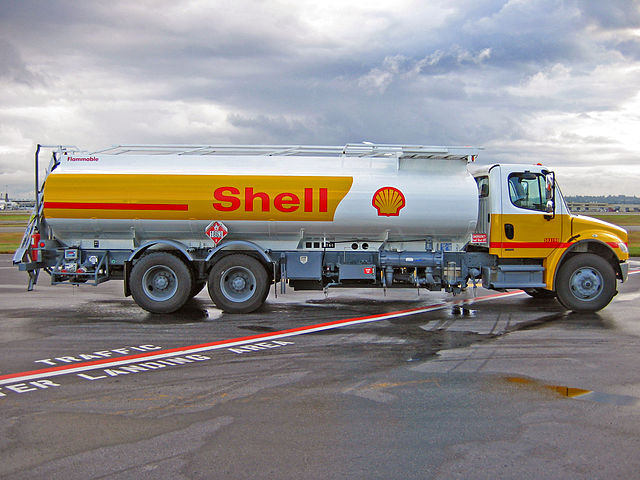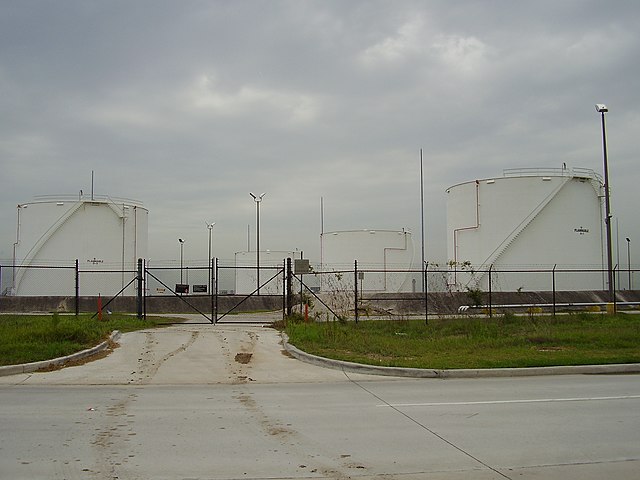Aviation fuels are petroleum-based fuels, or petroleum and synthetic fuel blends, used to power aircraft. They have more stringent requirements than fuels used for ground use, such as heating and road transport, and contain additives to enhance or maintain properties important to fuel performance or handling. They are kerosene-based for gas turbine-powered aircraft. Piston-engined aircraft use leaded gasoline and those with diesel engines may use jet fuel (kerosene). By 2012, all aircraft operated by the U.S. Air Force had been certified to use a 50-50 blend of kerosene and synthetic fuel derived from coal or natural gas as a way of stabilizing the cost of fuel.
An aviation fuel truck
At some airports, underground fuel pipes allow refueling without the need for tank trucks. Trucks carry the necessary hoses and pumping equipment, but no fuel.
Ground fueling of a MiG-29 from a URAL tanker (2011)
Aviation fuel storage tanks at George Bush Intercontinental Airport, Houston, Texas
Kerosene, or paraffin, is a combustible hydrocarbon liquid which is derived from petroleum. It is widely used as a fuel in aviation as well as households. Its name derives from Greek: κηρός (kērós) meaning "wax", and was registered as a trademark by Nova Scotia geologist and inventor Abraham Gesner in 1854 before evolving into a generic trademark. It is sometimes spelled kerosine in scientific and industrial usage.
A kerosene bottle, containing blue-dyed kerosene
Persian scholar Rāzi (or Rhazes) was the first to distill kerosene in the ninth century. He is depicted here in a manuscript by Gerard of Cremona.
A queue for kerosene. Moscow, Russia, 1920s
A truck delivering kerosene in Japan








